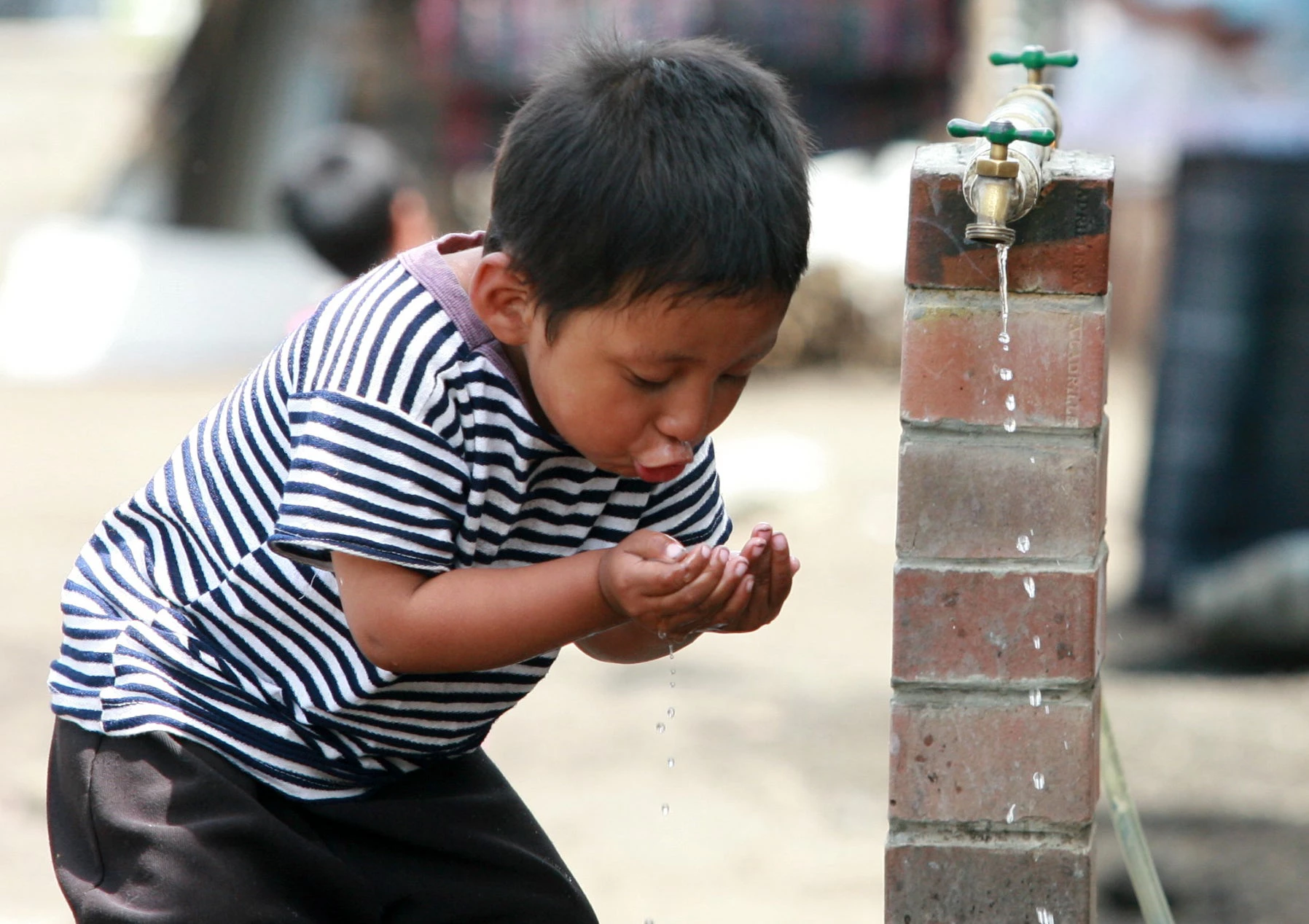 Un niño bebiendo agua en Panabaj, Solola, Guatemala
Un niño bebiendo agua en Panabaj, Solola, Guatemala
Despite the urbanization trends seen in Latin American and Caribbean (LAC), it seems that the rural population in LAC is decreasing in relative terms. In 2001, official figures indicated that 125 million people in LAC resided in rural areas representing 24% of the total LAC population. In 2013, this value decreased to 21% (130 million out of a total population of 609 million inhabitants), and it is estimated that by 2030, the rural population will decrease to represent 16.5% of the total (CEPAL, 2014).
“There is a ‘new rurality’ in Latin America, and it is critical to be aware of its distinctive features in view of designing and implementing sustainable WSS institutional reforms and investment projects in rural areas.” — this is an important preliminary finding of the World Bank’s Water Global Practice’s Rural Water Security and Sanitation (WSS) Advisory Services and Analytics (RWSS ASA) Initiative, currently ongoing in the LAC region. It aims to contribute towards the design and implementation of rural WSS projects in the region by gathering, systematizing, and disseminating learning on innovations and solutions to RWSS challenges in the region.
The ‘new rurality’ message is that we, development practitioners, may need to revise—or update—our conventional understanding of the rural LAC context. This is particularly true in view of the SDG Agenda, which calls for the design and implementation of sustainable institutional reforms that consider the changes in the social, economic, and political spheres, as well as confronts the threats of climate change. Ultimately, as the report states, ”achieving sustainable outcomes of reform in the WSS sector hinges on a deeper understanding of the total institutional logic of the sector and this includes understanding the societal rules that are defined by the local country context and political economy realities”. And, as we continue to bridge the gap in water, sanitation, and hygiene in LAC, and as we near the deadline for the achievement of SDG6, the focus will indispensably increasingly fall on rural areas. Better understanding the new rurality is also fundamental to ensure adequate funding and resource allocation to rural communities to achieve universal access.
According to JMP (2016), rural LAC has seen large increases in improved drinking water coverage since 1990, driven by an expansion of piped water on premises. While coverage of piped water on premises is high in South America (89%), it is considerably lower in rural Central America and Mexico (27%) and rural Caribbean (38%). Rural improved sanitation coverage in LAC increased from 36% to 64% between 1990 and 2015. Comparatively few households share sanitation facilities in South America but sharing of an improved facility is more widespread in the Caribbean and Central America and Mexico, where it is practiced by at least 10% of the population.
To learn more about the ‘new rurality’, the initiative is addressing two important questions: what has not changed in rural LAC’s WSS sector? And, what has changed?
What has not changed in the WSS sector in rural LAC? Unfortunately, a lot. While urban WSS performance rates are on the increase, the same trend is not witnessed outside of the urban circle, and inequalities persist. According to the JMP (2015) 14.1% of the rural LAC population lack access to a basic drinking water service (compared to 1.9% of the urban population) and 8.5 million people relied on surface water for drinking. In the same year, only 68.4% of the rural population used a basic sanitation service (compared to 90% of the urban population) and 18 million people in rural LAC still practiced open defecation.
SIASAR data (July 2019) indicates that of the 10,370 registered water communities in this database, 71% have a water service sustainability index (ISSA) category D, indicating reduced sustainability of water services. Underling factors include the lack of governance, uneven public resources distribution to support WSS community organizations, deterioration of infrastructure, poor water quality, weak community management models, poor operation and maintenance practices, weaknesses of service providers and local governments to afford external support to community organizations, among other governance and political economy challenges.
Rural LAC’s weak sector governance and management leads to persistent ineffective strategies to achieve adoption of hygiene practices and behavioral change, especially in fostering healthy hygiene attitudes and practices such as hand washing with soap and the adequate disposal of excreta, among others. Insistent social conflicts over the ownership and shared use of water, tend to be more acute as there is a growing scarcity in water. The lack of disinfection of drinking water systems also remains a chronic weakness at the regional level; it is estimated that less than 50% of rural LAC communities perform this practice, primarily due to the lack of infrastructure and elements needed for water chlorination. For example, in Colombia, only 12% of the rural population had access to some form of treated water, in Peru less than 1% of rural households access chlorinated water. In short, it is safe to say that universal access to quality and sustainable WSS services remains a challenge in rural areas.
However, there is also a long list of factors that have changed the WSS sector’s rural panorama—among others due to urbanization, increased knowledge on climate change impact, and various social changes—and these must be understood and considered when designing and developing adequate sector reform. Stay tuned for the upcoming blog (part 2) to learn more.



Join the Conversation